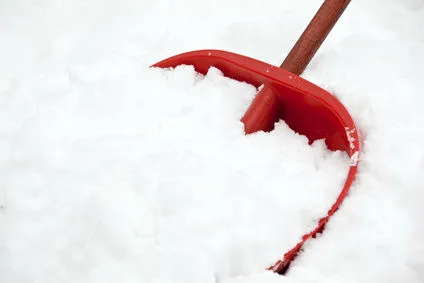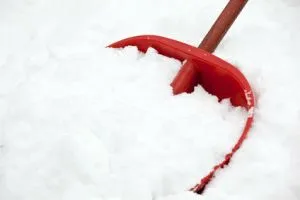
- Share on Facebook29
- Share on Pinterest
- Share on Twitter
When you think of dangerous wintertime activities, snow-shoveling probably isn’t at the top of the list. But in fact, the death rates from heart attack victims in men ages 35 to 49 triple when the snowy season rolls around and researchers from the Center for Injury Research and Policy of the Research Institute at Nationwide Children’s Hospital calculate about 11,500 snow-shoveling-related ER visits each year. Back injuries account for the most common ailment while heart attacks are among the most serious.
Why is shoveling in a winter wonderland so dangerous? The average snow-loaded shovel weighs approximately 16 pounds and the energy required to clear a driveway or sidewalk is equivalent to that of an active singles tennis match.
The cold air doesn’t make conditions any easier as that icy chill can make breathing difficult. However, shoveling snow can also be a great full-body workout and can help offset some of the extra eating done throughout the holiday season.
So rather than whipping out a snow blower or paying your neighbor to clear your path, follow some of these tips before you head out with shovel in-hand:
Warm up your muscles before shoveling. As with any exercise, a light warm up will loosen up tight muscles and prepare your heart for cardiovascular exercise.
- Avoid caffeine or other stimulants that will increase your heart rate too much as this places extra strain on the heart.
- Assess the right shovel for you. If you are inactive or haven’t shoveled before, a smaller shovel will prevent you from piling on too much weight. If you only have a large shovel, fill it only half the amount.
- Take your time. If the snow is deep don’t attempt full shovelfuls. Rather, stick to removing layers at a time. And remember, freshly fallen snow is lighter and easier to lift than more compacted snow.
 Lift with your knees, not your back. Be sure to bend your knees and keep your back as straight as possible. Never bend at the waist and if possible, push rather than lift the snow from the path as pushing is less stressful to your body.
Lift with your knees, not your back. Be sure to bend your knees and keep your back as straight as possible. Never bend at the waist and if possible, push rather than lift the snow from the path as pushing is less stressful to your body.- Know your risk factors. If you have a heart condition or have been inactive for a long period of time, you wouldn’t jump right into a tennis match. So you shouldn’t jump right into shoveling snow, either. If the snow accumulation is light and you feel you won’t over-exert yourself, then shoveling can be a great workout. But if the snows are deep and you have a large area to clear, consult a doctor prior to tackling the job.
-The Alternative Daily
Sources:
http://www.cbsnews.com/news/tips-to-shovel-snow-safely
http://www.weather.com/activities/homeandgarden/home/hometips/severeweather/snow_shovel.html
http://www.nsc.org/news_resources/Resources/Documents/Snow_Shoveling.pdf
http://www.sciencedaily.com/releases/2011/01/110118101356.htm
- Share on Facebook29
- Share on Pinterest
- Share on Twitter

